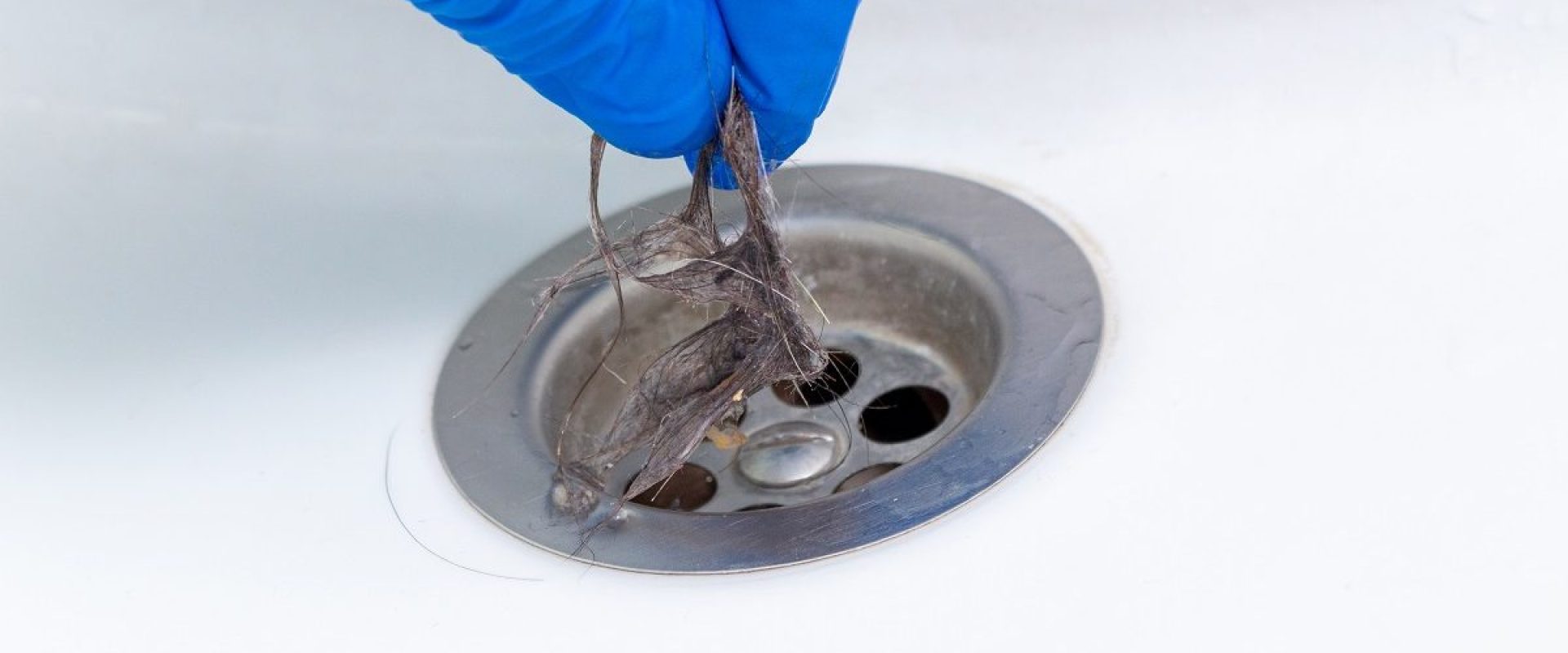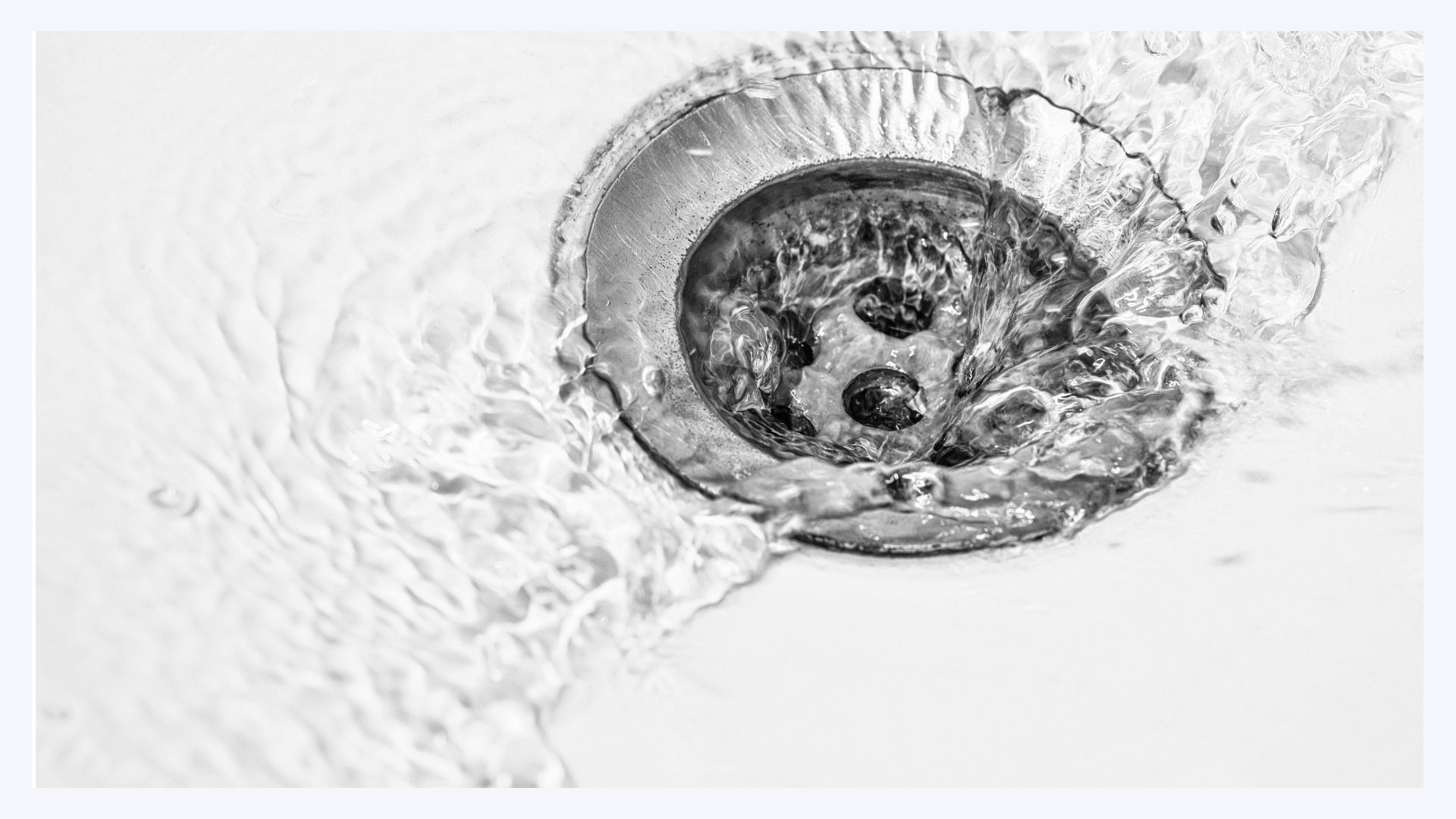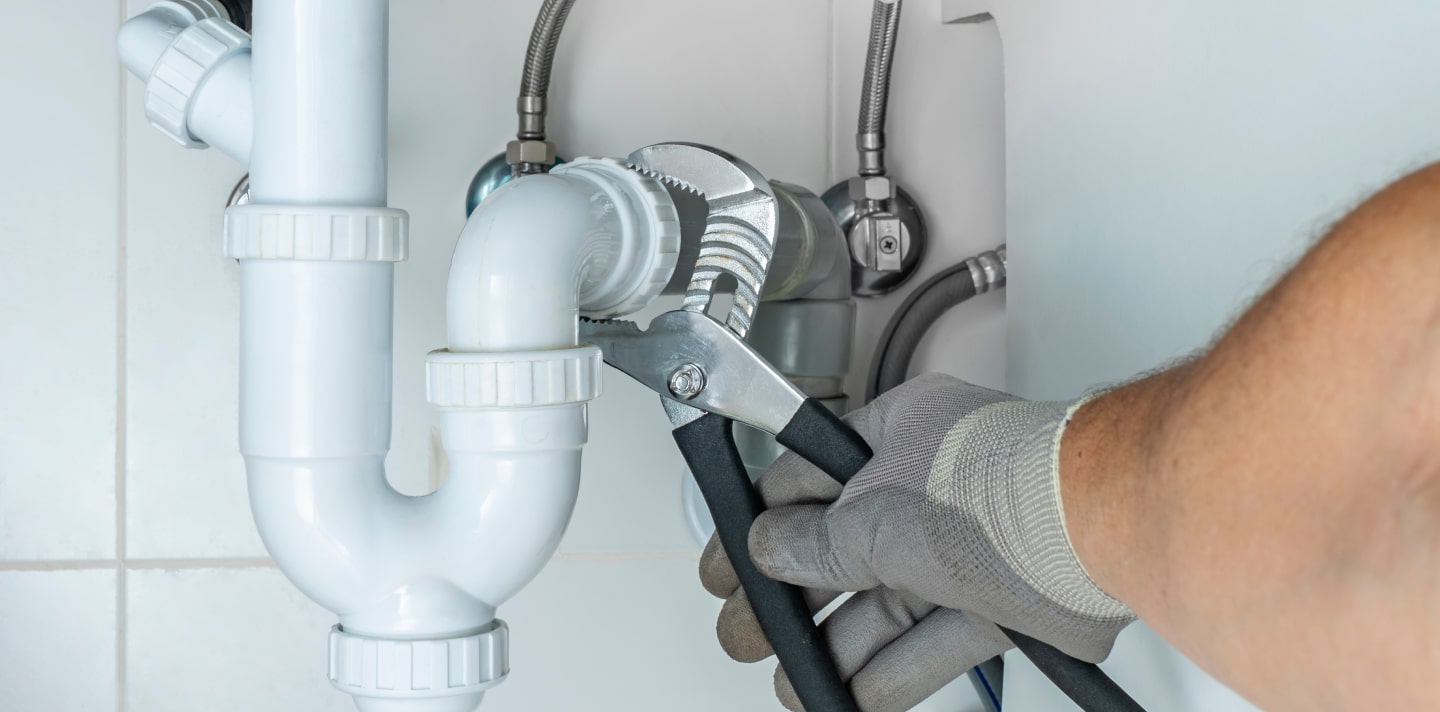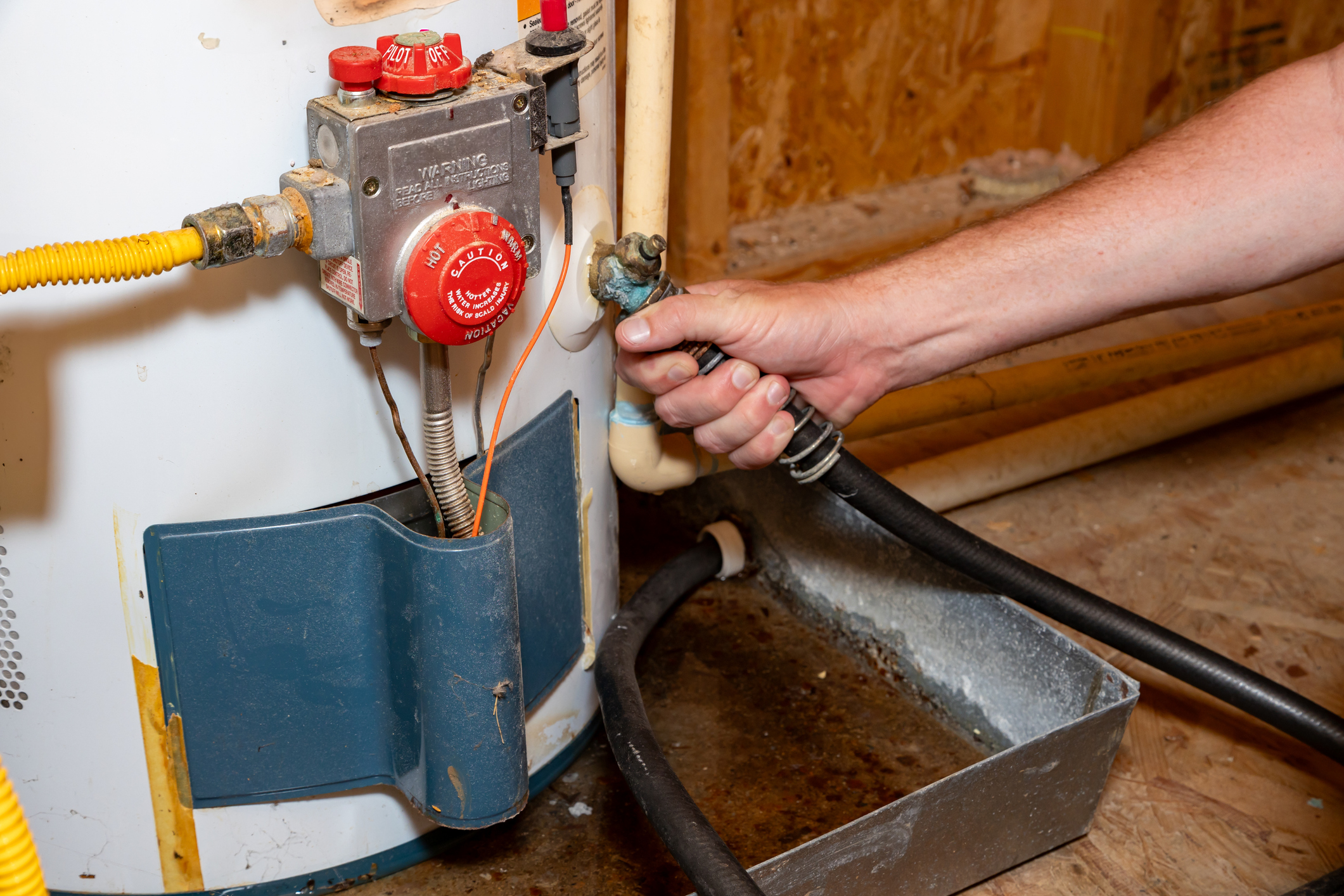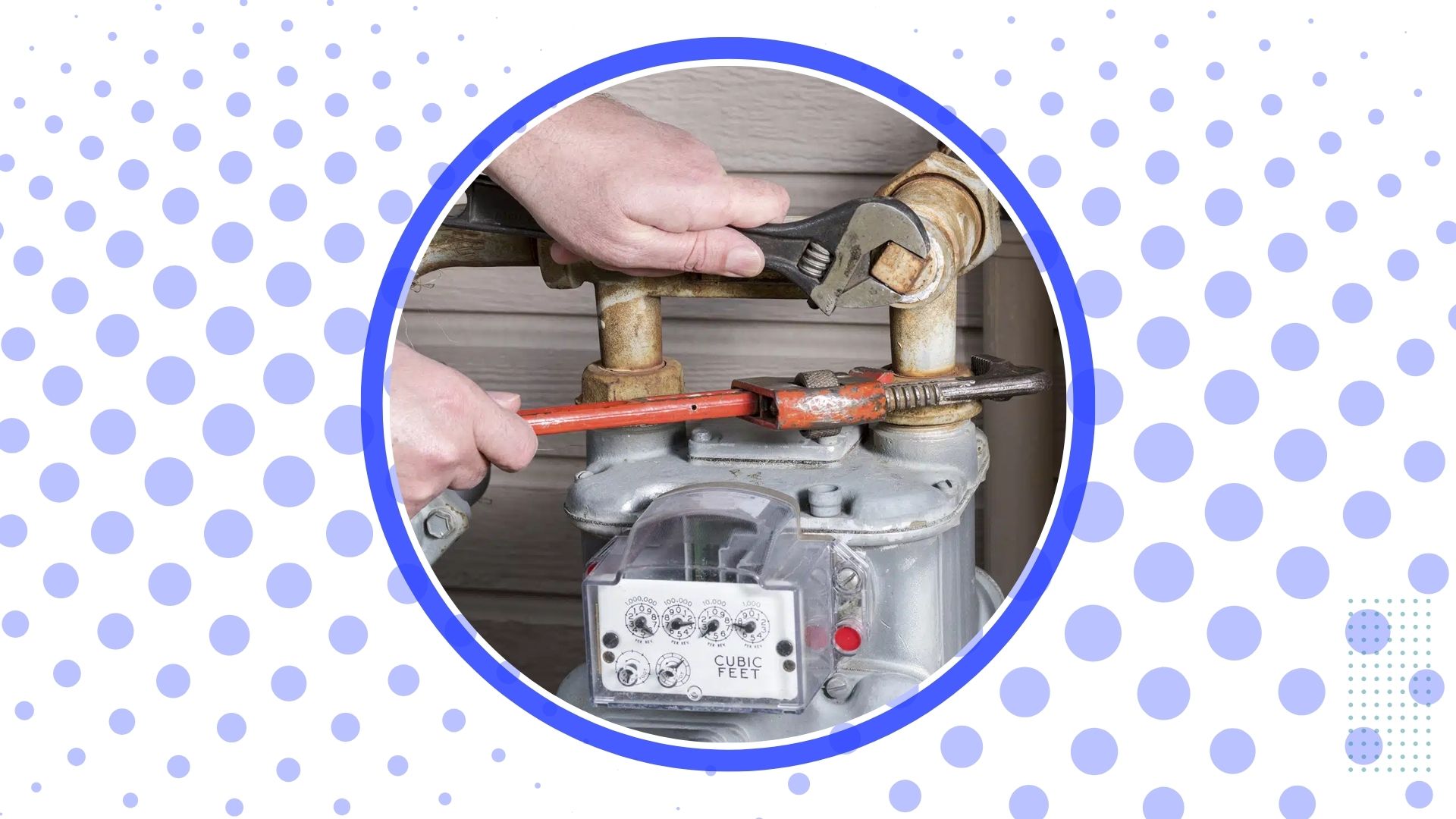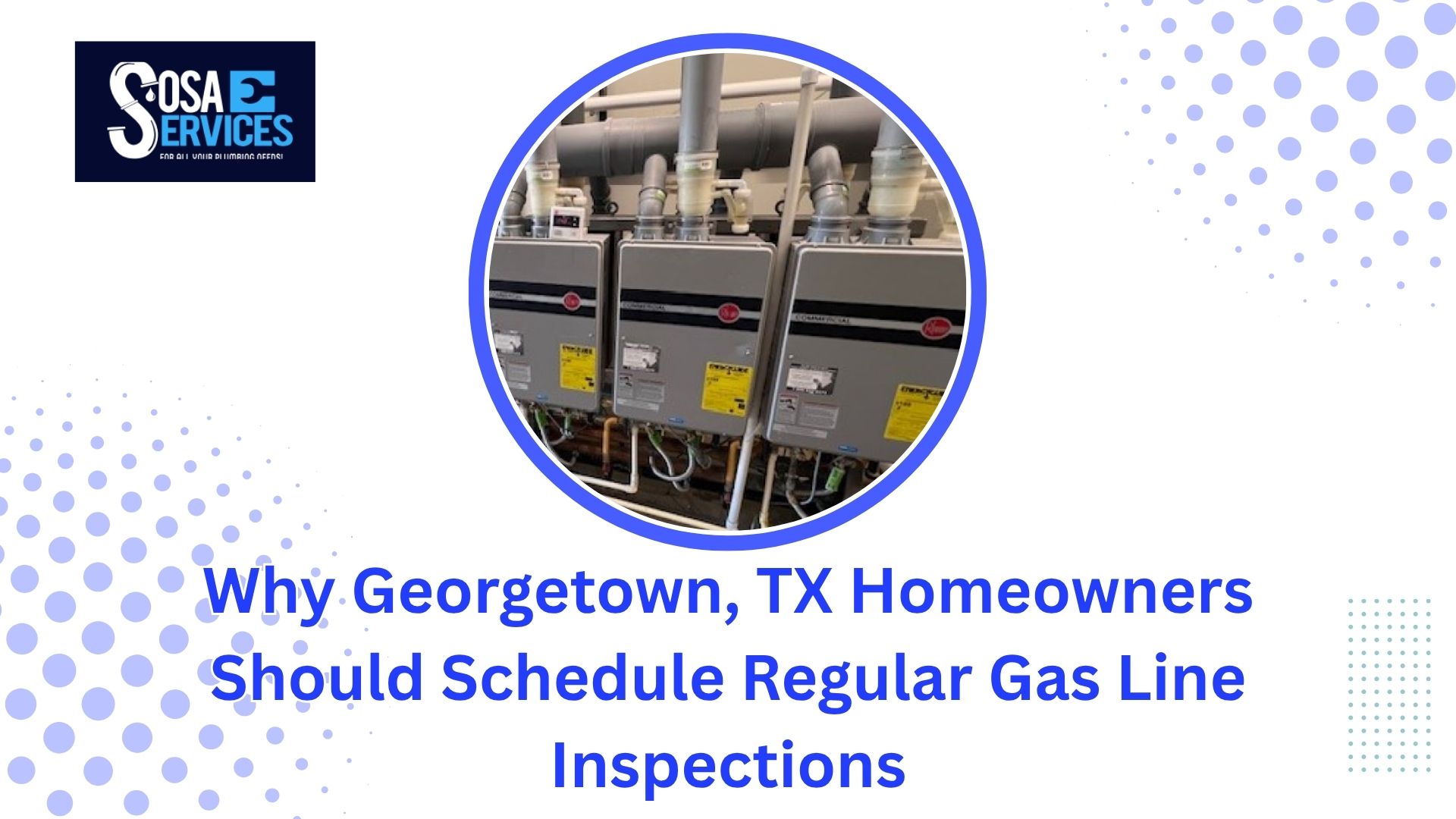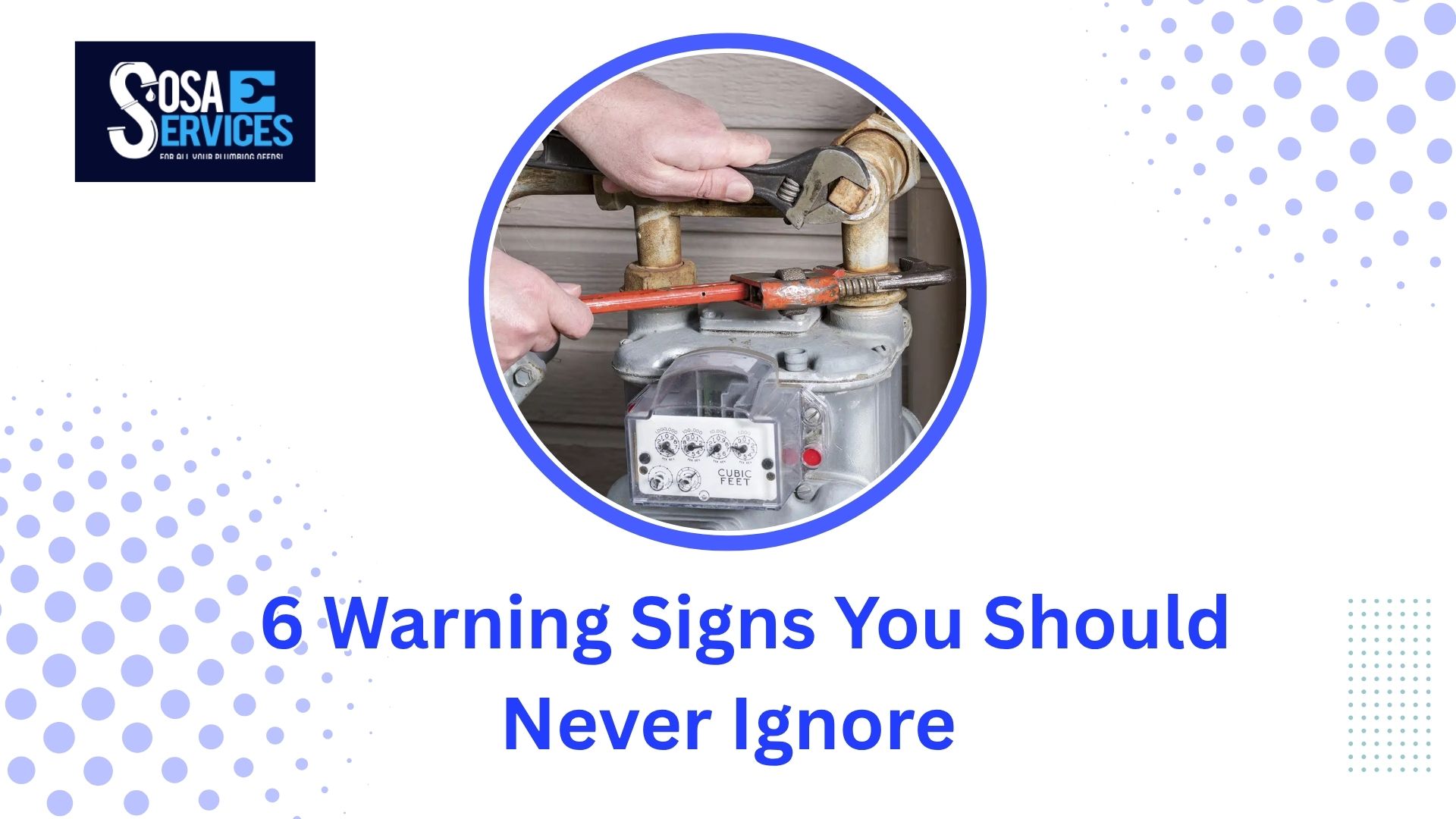Plumber will typically charge you $100–$400 to clear a clogged drain in Georgetown, TX, with higher fees for after-hours or emergency calls during hot summers and heavy storm runoff common to the Hill Country near Lake Georgetown and the San Gabriel River; nearby Inner Space Cavern and Georgetown Square don’t affect rates, but local permits and limestone pipes do. See drain cleaning, emergency plumbing, preventive maintenance.
Key Takeaways:
- Typical cost to clear a clogged drain in Georgetown, TX: $100–$400 for standard drain cleaning; $150–$600+ for emergency or after-hours calls; hourly rates range $45–$200. Local factors like older pipes in the historic Downtown Georgetown area can raise prices.
- Weather and geography affect clogs and pricing: Georgetown’s hot summers, seasonal storms and runoff from the San Gabriel River/Blue Hole area can increase debris and tree-root issues; limestone and older sewer lines near Southwestern University and Inner Space Cavern neighborhoods may need more invasive work.
- How to lower costs: get multiple free estimates, schedule non-emergency repairs during business hours, ask about flat-rate pricing and preventative maintenance plans to avoid repeat clogs.
Understanding Clogged Drains
Clogs develop from everyday use: hair, grease, soap scum, food scraps and wipes gradually restrict flow until you notice symptoms. You’ll often face a simple snake or plunger job ($100–$400) or, for stubborn blockages, camera inspection and hydro-jetting ($150–$800). Spotting problems early lets you choose a low-cost fix; letting them progress makes repairs more invasive and expensive. In Georgetown’s older neighborhoods, aging lines and tree roots accelerate buildup, so local conditions matter for both frequency and cost.
Common Causes of Clogged Drains
Shower clogs usually come from hair and soap scum, while kitchen sinks choke on grease, coffee grounds and fibrous vegetable scraps. Toilets get blocked by diapers, “flushable” wipes and excessive paper. Outdoor roots invade clay or older PVC sewer lines, creating recurring blockages that resist snaking. You should also watch for mineral scale in hard-water areas; scale narrows pipes over years and compounds other debris, increasing the chance you’ll need a camera inspection or rooter service.
Signs Your Drain is Clogged
Slow drainage, gurgling noises, recurring backups and foul odors signal a developing clog; simultaneous slow drains in multiple fixtures often indicate a main sewer issue. You may notice water pooling around the base of fixtures or the toilet rising when another sink runs—these are clear warnings of a blockage. Quick detection lets you opt for affordable remedies like plunging or a $100–$200 snake instead of emergency repairs.
Testing your drains helps diagnose scope: run the affected fixture for 30–60 seconds, check adjacent fixtures, and listen for gurgles in vents. If plunging and a hand snake fail, a professional camera inspection ($150–$400) pinpoints location and cause—hair cluster, grease ring, root intrusion—so you avoid unnecessary work. Note that repeated sink backups often require hydro-jetting ($300–$800) or targeted repairs rather than DIY fixes.
Potential Consequences of Ignoring Clogs
Letting clogs persist risks water damage, mold growth and sewage backup into your home—issues that dramatically raise repair costs. A simple clog fixed for a couple hundred dollars can escalate into pipe replacement or sewer line repair costing $1,000–$4,000 if left unchecked. You also face health hazards from contaminated water and structural damage from prolonged leaks, so weighing immediate repair costs against potential major expenses is practical.
Local factors like Georgetown’s soil and mature trees increase the chance of root-related failures; those often show up as recurring backups and require excavation or trenchless repairs costing between $1,000 and $3,500. Insurance claims for water and mold damage frequently exceed basic repair estimates, so calling a licensed plumber early can limit both health risks and long-term out-of-pocket expenses.
Overview of Plumbing Costs in Georgetown, TX
Georgetown sits north of Austin along the San Gabriel River and sees hot summers, seasonal storms and flash‑flood risk that drive plumbing demand. You’ll face higher service volume from historic downtown homes and nearby Sun City residents, which pushes prices modestly above rural Texas averages. Expect swings during storm season, higher labor demand because of proximity to Austin, and occasional after‑hours emergency premiums when weather causes main‑line backups or burst pipes.
General Plumbing Fee Structure
Service calls in Georgetown typically run from about $75–$150, with hourly rates ranging roughly $45–$200 depending on technician level. Flat fees for common jobs include drain unclogs $100–$400, water‑heater repairs $200–$900, and main‑line repairs $600–$2,000; permit costs sit around $30–$500 for sewer or major work. You should ask for a written estimate that separates labor, parts and permit charges.
Regional Influences on Pricing
Proximity to Austin, local labor shortages, and the age of Georgetown’s historic plumbing all lift prices compared with many small Texas towns. Seasonal storms spike demand for sewer cleanup and main repairs, and parts availability can add delays and markup; emergency response and specialized equipment like camera inspections or hydrojetting will increase costs further.
Local factors you’ll see on estimates include travel/time fees (typically $25–$75), equipment surcharges for hydrojetting or trenchless repairs (often an extra $300–$1,200), and higher hourly rates for master plumbers brought in for complex jobs. Sewer backups carry health risks and cleanup fees, so expect both higher labor and disposal costs when raw sewage is involved; permitting and inspection rounds can add days and $30–$500 to the final bill.
Comparison with Statewide Average Costs
Georgetown prices generally sit a bit above the statewide midpoint because of Austin‑area demand; for example, you might pay $125–$350 to clear a clogged drain here versus a Texas average of about $100–$300, while hourly rates commonly cluster $60–$150 in Georgetown against the statewide $45–$200 spread. Emergency and permit fees are the biggest gap drivers.
Georgetown vs Texas Average — Typical Costs
| Cost Type | Georgetown / Texas Avg |
|---|---|
| Service call | Georgetown: $75–$150 · Texas: $50–$125 |
| Hourly rate | Georgetown: $60–$150 · Texas: $45–$200 |
| Drain unclog (flat) | Georgetown: $125–$350 · Texas: $100–$300 |
| Main line repair | Georgetown: $700–$2,500 · Texas: $600–$4,000 |
| Permit fees | Georgetown: $30–$500 · Texas: $30–$500 |
Price differences stem from local labor markets, proximity to suppliers, and demand surges during Georgetown’s hot, storm‑prone months; contractors near Austin often charge premium rates for faster response. You can compare specific services like drain cleaning and emergency plumbing to spot markup items, and always ask whether quoted work includes permits, camera inspection, or hydrojetting to avoid surprises.
Cost Drivers: Georgetown vs State
| Driver | Effect on Price (Georgetown vs Texas) |
|---|---|
| Labor demand | Higher near Austin → modestly higher hourly rates |
| Weather/season | Summer storms → surge in emergency calls and sewage cleanups |
| Equipment needs | Specialty gear (hydrojet/camera) adds $300–$1,200 |
| Permits & inspections | Similar statewide, but local processing can add time/cost |
Factors Influencing the Cost to Clear a Clogged Drain
Costs depend on several variables you should weigh: access, equipment, materials, permits and whether service is after hours or requires excavation. Local labor rates and whether a camera inspection or hydro-jetting is needed change estimates quickly. Travel time from Georgetown, TX crews and potential sewage backup risks add expense and risk to the job. Assume that a deep main sewer line clog or emergency call will push the total well above a basic service fee.
- Severity of the clog
- Location within the plumbing system
- Time required for the service
- Access and need for excavation
- Equipment like snakes, cameras, hydro-jetters
- After-hours / emergency fees
- Permits and disposal costs
Severity of the Clog
Minor blockages from hair, soap or food debris often take 15–30 minutes with a snake and run between $100–$250; tougher clogs from grease or scale can need 1–2 hours and cost $200–$500. Tree roots or collapsed lines usually require camera inspection ($100–$400) and hydro-jetting or excavation, which can push costs into the hundreds or thousands—watch for sewage backup that increases health risk and remediation expense.
Location of the Clog within the Plumbing System
Kitchen sink clogs are generally cheaper ($100–$250) than bathtub or shower lines ($150–$300); a clog in the main sewer line often runs $250–$1,200+ because of access and heavier equipment required. You pay more when the blockage is outside your house on the lateral or in older clay pipes that resist snaking and favor hydro-jetting or excavation.
On-property lateral issues may require street/right-of-way permits and liaison with municipal crews in Georgetown, TX, which adds time and fees. Camera inspections locate problems precisely—saving money on trial-and-error—and tree-root intrusion frequently leads to trenching or pipe lining, costing from $1,000 to $4,000 depending on depth and landscaping restoration needs. Prioritize a diagnostic camera to avoid surprise charges.
Time Required for the Service
Simple sink or shower clogs often take under an hour, while stubborn obstructions or main-line issues can occupy a technician several hours or a full workday. Plumbers bill by flat rate or hourly ($45–$200/hr); expect higher totals when jobs require set-up, safety prep for sewage handling, or multiple technicians to complete the work efficiently.
Diagnosis with a camera typically adds 30–60 minutes but can cut downstream costs by directing the right repair method. After-hours calls commonly add 25–100% to the base rate, and jobs that need excavation or lining extend timeline by days if permits are involved. Factor in cleanup and testing time when estimating final arrival-to-completion hours.
Average Cost Breakdown for Drain Clearing Services
Typical drain clearing in Georgetown runs from a quick sink unclog at $100–$250 to more involved mainline work of $300–$700; a full camera inspection plus snaking often pushes the job into the $350–$600 range. You can usually expect a service call fee of $75–$150, and total cost depends on access, pipe material, and whether roots or grease require extra work.
Hourly Labor Rates for Plumbers in Georgetown
Local hourly rates usually fall between $70–$150 per hour for journeymen, with master plumbers billing up to $200+; many firms enforce a 1–2 hour minimum and a separate service call charge. You’ll see lower rates for simple follow-ups or weekday appointments and higher rates for emergency or weekend calls.
Common Flat Fees for Drain Clearing
Flat fees simplify budgeting: small sink/shower clogs commonly cost $100–$200, kitchen drains or disposals $150–$350, and main sewer cleanouts $300–$600. Flat pricing usually covers basic snaking, labor up to a set time, and disposal of debris from the immediate job.
Flat fees often include travel and up to 30–60 minutes of on-site work; beyond that, you may incur hourly overtime or itemized charges for parts. For example, a $200 flat fee might cover a 30‑minute snake and one service call, while persistent blockages requiring camera work or repeat visits convert to additional fees.
Additional Charges for Specialized Services
Specialized work carries distinct rates: hydro-jetting typically runs $300–$800, CCTV camera inspections $150–$500, and sewer line repairs or trenchless replacement start around $1,000–$3,000+. After-hours, weekend, and emergency calls commonly add a 25–100% premium.
Expect specialized fees when you face recurring clogs, tree-root intrusion, or heavy grease buildup—hydro-jetting removes scale and roots that snaking can’t, while a camera inspection pinpoints the problem before you pay for repairs. Emergency backups into your home are the most dangerous and expensive scenarios, so immediate action and accurate diagnostics are worth the extra cost.
Tools and Techniques Used for Clearing Clogged Drains
Plumbers in Georgetown use a mix of hand tools and high-tech gear because local tree roots, clay soils and sediment from the San Gabriel River drive many blockages. Expect basic jobs with plungers or snakes; tougher clogs can require hydro-jetting (1,500–4,000 psi) or camera inspections. Typical pro prices: camera $150–$600, hydro-jet $350–$1,000 — check specifics at Plumbing Services in Georgetown, TX.
Manual Methods (Plungers, Snakes)
You can clear many sink and shower clogs with a basic plunger ($5–$20) or a manual drain snake/hand auger ($20–$100). Plungers work best on short, air-sealed traps; snakes reach 10–25 feet for tougher blockages. Hiring a pro with a powered auger typically runs $100–$300 and reduces risk of improper snaking that can push clogs deeper.
Mechanical Methods (Hydro Jetting, Camera Inspections)
Hydro-jetting blasts buildup, grease and roots with high-pressure water, while camera inspections locate breaks, offsets and pinch-points before repair. Hydro-jet residential pressures commonly sit between 1,500–4,000 psi; machines and labor drive costs, so expect $350–$1,000 for most jobs. Cameras often pay for themselves by avoiding unnecessary digging.
Camera sondes identify pipe diameter, joint condition and exact depth, helping you decide between spot repairs or full-line rehab; insurers and permits often demand a camera report for sewer work. Hydro-jetting excels at biological film and root removal but can damage old clay or cast-iron pipes, so technicians typically perform a camera run first and may recommend a lower-pressure pass or alternative repair if the line is fragile.
Chemical Solutions and Their Costs
Retail chemical drain cleaners cost about $5–$20 and offer quick relief for organic clogs, while professional chemical treatments or enzyme blends run $50–$200. Strong caustic or acidic products can clear hair and grease but may corrode pipes, damage seals, and pose serious safety hazards, so many Georgetown pros avoid them on older systems or when future excavation is likely.
Caustic cleaners (sodium hydroxide) dissolve organic matter; acid-based products attack hair and scale but generate heat and toxic fumes. Enzyme/biological treatments work over 24–72 hours and are pipe-friendly but slower. Never mix chemicals—doing so creates toxic gas—and if a camera or hydro-jet will follow, disclose prior chemical use to your plumber to prevent dangerous reactions.
Comparing DIY Drain Clearing Techniques to Professional Services
DIY methods like plungers, hand augers and chemical cleaners can get simple clogs moving for under $50, but they often miss deep blockages and can harm older pipes; professionals charge $100–$400 for a standard unclog and use tools such as camera inspection and hydro-jetting that resolve root causes and come with warranties. If multiple fixtures back up or you smell sewage, you should lean toward a pro to avoid major water damage.
Side-by-side comparison
| DIY Techniques | Professional Services |
|---|---|
| Plunger, vinegar/baking soda, hand snake | Motorized drain snakes, camera inspection, hydro-jetting |
| Low upfront cost ($0–$100) | Higher upfront cost ($100–$400) but higher success |
| Quick for sink/trap clogs | Effective for mainline and deep blockages |
| Can push clog deeper | Diagnoses root cause, reduces recurrence |
| Risk of chemical damage to pipes | Minimizes pipe damage with proper tools |
| No warranty or follow-up | Often includes guarantees and follow-up service |
| Best for small, single-fixture slow drains | Best for recurring, multiple-fixture, or sewage issues |
Pros and Cons of DIY Methods
DIY clearing gives you immediate control and saves money on simple clogs—plungers and hand snakes often work for bathroom sinks and showers. Downsides include a high chance of only temporarily clearing the blockage, potential chemical harm from caustic cleaners, and the risk of worsening the problem if you push a clog into the main line; if you see standing water in multiple fixtures, call a pro.
Pros vs Cons
| Pros | Cons |
|---|---|
| Low cost | May not remove deep clogs |
| Immediate action available | Can push clog deeper |
| No appointment needed | No warranty |
| Good for hair/soap clogs | Chemicals can corrode pipes |
| Helps avoid small service calls | Risk of incomplete fix and repeat costs |
| Simple tools you likely own | Unsafe for sewer backups and root intrusions |
When to Seek Professional Help
Call a plumber when clogs recur within weeks, affect multiple drains, produce foul sewage odors, or cause slow draining across the home; also reach out after failed DIY attempts or visible pipe leaks, since professionals use camera inspections that reveal breaks, root intrusion, or collapsed sections that DIY methods won’t fix.
Professionals in Georgetown and the Austin metro use diagnostic cameras and hydro-jetting to clear 95% of mainline issues on first visit, avoiding repeated service calls. If you face backup into toilets, raw sewage smells, or rising water around floor drains, shut off water to affected areas and get a licensed plumber—these signs indicate health hazards and potential structural damage that DIY tools can’t resolve safely.
Cost Analysis of DIY vs. Hiring a Plumber
DIY expenses typically run $0–$150 for plungers, hand snakes, or store-bought cleaners and occasional tool purchases; hiring a plumber for a standard clog usually costs $100–$400 or $45–$200/hour, while camera inspections add $150–$400 and hydro-jetting can reach $300–$800.
Factor in risk: a failed DIY attempt can turn a $50 fix into a $200–$1,500 repair if pipes are damaged or the clog worsens. For recurring or unknown-source clogs, paying for professional diagnostics often saves money over time by identifying root causes (tree roots, collapsed pipe, grease build-up) and preventing repeated service calls. If you want a precise Georgetown estimate, obtain free quotes from local licensed plumbers and compare camera inspection options before deciding.
The Importance of Hiring a Licensed Plumber in Georgetown, TX
Understanding Licensing Requirements
Licensing tiers—apprentice, journeyman, master—are overseen by the Texas State Board of Plumbing Examiners, and Georgetown typically requires plumbers to register and pull permits for sewer work, water heater installs or major repairs. Verify a plumber’s license with the TSBPE lookup and confirm local registration and insurance so you don’t inherit permit violations or failed inspections after the job is done.
Benefits of Hiring Licensed Professionals
When you hire a licensed plumber you get code-compliant work, handled permits, written estimates and warranties that reduce repeat calls; licensed master plumbers justify higher rates by preventing costly callbacks and ensuring permit-legal, inspected repairs that protect your property and insurance coverage.
Licensed pros will pull required permits (typically $30–$500), use camera inspections ($100–$400) to pinpoint clogs and avoid unnecessary excavation, and often provide 30–90 day warranties on drain clearing, giving you documented protection and a clear path for recourse if issues recur.
Risks Associated with Unlicensed Services
Hiring unlicensed technicians risks pipe damage, code violations, voided homeowner insurance claims and no warranty; what starts as a $150–$400 drain clean can balloon into a $1,500+ sewer repair if seals are broken or improper tools are used. No insurance or permit pull leaves you financially exposed for corrections and fines.
Local examples show unpermitted or amateur fixes can create hidden leaks, cross-connections or mold that cost you $2,000–$6,000 to remediate; municipal inspectors may issue stop-work orders and fines, and your insurer can deny claims for work done without proper licensing or permits.
Local Regulations and Permits in Georgetown, TX
Georgetown requires you to follow city and state plumbing rules for most drain and sewer work, with permits and inspections handled by the City of Georgetown Building Inspections Division. Simple sink clogs rarely need a permit, but work on sewer laterals, cleanouts, reroutes or new connections typically does; permit fees in the region generally range from $30 to $500, depending on scope and whether plan review or multiple inspections are needed.
Overview of Local Plumbing Regulations
You must comply with Texas plumbing statutes plus Georgetown’s local amendments, which mandate licensed tradespeople for permitted work, documented inspections, and approved materials. Inspections generally cover the sewer tie-in, backflow prevention, and final drainage slope. Violations can trigger a stop-work order or citation, and the city keeps records that may affect future permits or property transactions.
Permit Requirements for Drain Clearing
Minor clogs you clear with a snake or hydro-jet usually don’t require a permit, but any job that alters a sewer lateral, installs a new cleanout, or opens the main line will. You should expect to have a licensed plumber pull the permit, schedule at least one inspection, and pay a fee—commonly within the $30–$500 range—before final sign-off.
For example, replacing a collapsed sewer lateral often requires a permit application, site plan or sketch, and a pre- and post-install inspection; total permit and inspection costs in similar Central Texas cities commonly add $100–$400 to contractor charges. You should confirm with the City of Georgetown whether photographic documentation or video of the existing line is required at submission to speed approval and avoid re-inspection fees.
Potential Legal Issues and Compliance Costs
Skipping permits can leave you exposed to fines, mandated corrective work, and possible complications when selling your home or filing insurance claims. The city may assess re-inspection fees, civil penalties, or require you to remove noncompliant work at your expense, turning a cheap DIY fix into a costly legal problem.
Unpermitted drain work discovered during a resale inspection can force you to reopen walls or excavate lines to bring systems up to code, with corrective contractors charging both labor and materials plus permit fees—often totaling several hundred to a few thousand dollars. You also risk insurance denial for claims tied to unpermitted alterations; hiring a licensed plumber to pull permits protects you from expensive rework and potential coverage issues.
Customer Reviews and Testimonials
Finding Reliable Plumbers in Georgetown
Check local review hubs like Google, BBB and Nextdoor for plumbers serving Georgetown, especially near the downtown Square and Sun City neighborhoods; look for contractors who list services such as drain cleaning or emergency plumbing. Aim for companies with an average rating of 4.0+ from 20+ reviews, clear pricing examples, and mentions of working around Hill Country features like limestone pipes and seasonal heat-driven call spikes.
Evaluating Customer Feedback
Scan recent reviews for patterns: repeated praise for same-day response, clear flat-rate quotes, or complaints about hidden fees and poor cleanup. Prioritize reviews that reference specific jobs—unclogging kitchen or sewer line repairs—and note whether customers in Georgetown or nearby Round Rock report consistent outcomes.
Request before/after photos or ask the company for local references you can call; companies that publish detailed case notes (job duration, parts used, final cost) demonstrate transparency. Verify how negative reviews were handled—companies that offer refunds, follow-up repairs or written warranties usually provide better post-service protection.
Importance of Word-of-Mouth Recommendations
Tap neighborhood channels like HOA boards, Sun City resident groups, and Nextdoor for firsthand referrals—neighbors often report fair pricing and punctuality. A single trusted referral can save you time and spot problems others missed, especially with Georgetown’s older homes where hidden root-intrusions or sediment buildup are common.
When asking neighbors, probe for specifics: whether the plumber honored the original quote, cleaned up, and offered a warranty. Favor recommendations where the referrer mentions the exact service (e.g., sewer snaking vs. whole-line replacement) and the final price range; that level of detail predicts fewer surprises.
Seasonal Considerations for Clogged Drains
Georgetown’s hot, humid summers and sporadic winter freezes reshape what you find clogging pipes: sunscreen, yard debris and tree roots dominate at different times, while heavy spring storms overload storm drains. Local clay soils and mature oak roots around Lake Georgetown increase root intrusion risk. Plan for seasonal patterns so you avoid emergency calls that often cost 1.5x–2x normal rates after major storms; sewer backups can contaminate your home and cost thousands to remediate.
Common Clogging Issues by Season
Summer brings sand, sunscreen, and increased outdoor entertaining grease down kitchen drains; fall loads gutters with leaves that clog downspouts and outside drains; spring storms push debris and can trigger sewer backups; rare winter freezes (below 32°F) risk frozen pipes that burst and introduce pressure-driven debris into lines. You’ll often see root intrusion worsening after wet seasons, with roots exploiting small cracks and creating blockages that start as slow drains and escalate to raw sewage backups.
Preventative Measures to Avoid Seasonal Clogs
Use sink and tub strainers, install gutter guards, and avoid pouring grease down drains—cool grease solidifies and forms hard blockages. Flush drains monthly with hot water and ½ cup baking soda followed by ½ cup vinegar, then hot water. Schedule a professional camera inspection every 12–24 months and hydro-jetting as needed to clear roots and grease before they require costly repairs.
Professional preventive work typically costs far less than emergency fixes: a camera inspection runs about $150–$400 and hydro-jetting $300–$800. If you trim roots and use strainers, you often avoid sewer lateral repairs that can exceed $2,000. Homeowners in Georgetown who combine DIY maintenance with annual inspections commonly cut major sewer-call probability by over 50%, saving hundreds to thousands over several years; small yearly investments prevent large emergency bills.
Cost Implications of Seasonal Plumbing Services
Peak demand after storms or during freezes often triggers higher trip and labor fees—expect emergency or after-hours visits to run 1.5x–2x standard rates. Simple unclogs usually cost $100–$400; camera diagnostics $150–$400; hydro-jetting $300–$800; root cutting or localized repairs $200–$600. You should budget seasonally: spring and post-storm months often see both more calls and longer job durations, driving up total invoices.
Example: a storm-driven sewer backup can incur a $200–$500 emergency trip charge plus $400–$1,500 in cleaning, camera work and repairs, totaling $600–$2,000. Contrast that with a $300 annual preventive plan (inspection + minor cleaning) that reduces emergency visits and can prevent a $1,200+ repair. Insurance may not cover maintenance-related failures, so you bear repair costs unless damage stems from a covered peril, making proactive spending a smart financial move.
Tips for Maintaining Clear Drains
Keep a simple routine: run hot water after dish loads, clear hair from shower drains weekly, and flush kitchen drains monthly with 1/2 cup baking soda, 1 cup vinegar, then hot water after 15 minutes. Use sink screens and never pour grease down the drain since grease can solidify into major clogs that require hydro-jetting. Any professional cleaning becomes necessary when you notice repeated slow drains, persistent odors, or standing water; expect typical costs of $100–$400.
- Drain cleaning
- Preventative maintenance
- Hair and grease removal
Regular Maintenance Practices
Schedule a monthly flush with 1/2 cup baking soda and 1 cup vinegar followed by boiling water, clean shower hair catchers weekly, and run cold water while using the garbage disposal; apply enzyme treatments every 3 months to break down organic buildup. Track maintenance on your calendar, since neglected buildup can cut flow by over 50% within a year.
Household Habits to Prevent Clogs
Train everyone to scrape plates into the trash, pour cooled grease into a jar instead of the sink, and never flush wipes or paper towels; empty bathroom strainers after each use to stop the most common hair-and-soap blockages before they form.
When you cook, let fats solidify and dispose in a sealed container to avoid rings in P-traps; run a strong hot-water flush after lint-heavy laundry loads and use the garbage disposal for small food scraps only—overloading can push solids into the main line and lead to costly hydro-jetting repairs of $300–$600.
Importance of Professional Inspections
Schedule a licensed plumber for a camera inspection every 12–24 months to catch tree-root intrusion, offset joints, or hidden grease buildup that DIY methods miss; a basic video inspection in Georgetown typically costs $150–$350 and can prevent emergency repairs running into the thousands.
Video diagnostics before major landscaping, buying a home, or after recurring backups reveal whether you need spot repairs, trenchless lining, or full replacement; targeted trenchless fixes can save you up to 60% compared with excavation and replacement, and inspection records help with warranty or insurance claims.
Emergency Drain Services in Georgetown, TX
When you face a sudden clog that risks flooding or a sewage backup, call local pros listed for Drain Cleaning Services in Georgetown, TX who provide same-day response, camera inspections, and hydro-jetting; summer storms and tree roots near the San Gabriel River often worsen blockages, so get help before damage spreads.
When to Call for Emergency Plumbing Services
Call immediately if water is continuously pouring from a broken line, multiple fixtures back up at once, you detect a strong sewage odor, or water contacts electrical outlets; these signs point to burst pipes, compromised sewer lines, or contamination that can cause structural damage and health risks within hours.
Average Costs of Emergency Call-Outs
Expect a typical emergency call-out fee in Georgetown to run about $100–$300, with after-hours or weekend rates often 1.5×–2× higher; total emergency repairs usually range from $250 for simple unclogs to $1,500+ for camera diagnostics plus hydro-jetting or root excavation.
Breakdown: a diagnostic camera inspection often costs $100–$300, basic snaking $150–$400, and hydro-jetting $300–$800; extensive sewer repairs or root removal can push the bill into the thousands. Local demand after heavy rains or freezes can increase response times and pricing, so you may pay premiums during peak events.
Tips for Handling Plumbing Emergencies
Shut off your main water valve, stop using affected fixtures, move valuables out of harm’s way, and avoid pouring chemicals down the drain; these steps limit water damage and prevent chemical hazards while you arrange for a licensed emergency plumber to arrive.
Keep the main shut-off clearly labeled, know the location of your electrical panel to cut power if water reaches outlets, and take quick photos for insurance. Have a trusted contractor’s number saved and note that Williamson County weather—heavy rains or freeze events—often spikes service demand. Recognizing early signs like repeated slow drains or recurring odors lets you act before costs escalate.
- emergency plumber
- drain cleaning
- hydro-jetting
- sewage backup
- call-out fee
Insurance and Warranty Considerations
Coverage for Plumbing Services
Ask plumbers to show a current COI with general liability of at least $500K–$1M and workers’ comp so any on-site damage or injury isn’t your bill. Homeowners insurance often covers sudden events like a burst pipe costing $1,000–$4,000 after your deductible ($500–$2,000 typical), but policies usually exclude gradual leaks or poor maintenance. If a plumber causes flooding, their insurer should cover repairs; keep invoices and photos for any claim.
Understanding Warranties on Plumbing Work
Contractor labor warranties commonly run from 30 to 365 days, while manufacturer warranties for parts range from 1 to 10 years (water heaters often 6–12 years, faucets 1–5 years). Get warranty terms in writing, note start dates and whether warranties are transferable, and confirm what actions void coverage (e.g., DIY alterations or chemical drain cleaners).
Distinguish between the contractor’s labor warranty and the manufacturer’s parts warranty: if a new pump fails, the maker may replace the part under a 3–5 year warranty but you’ll still rely on the plumber’s labor warranty for installation charges. Verify whether the warranty covers diagnostic visits, shipping, and labor, and ask for a written process and timeline for filing claims—many contractors require notification within 30 days of failure. Keep receipts, photos, and the original invoice; they speed up approvals and prevent disputes.
Financial Protection Against Costly Issues
Major repairs can hit hard—sewer line replacement commonly runs $3,000–$10,000, and full water heater replacement typically costs $600–$2,500. Warranties, contractor insurance, and optional home-warranty plans can limit out-of-pocket exposure, but you should check deductibles, coverage caps, and exclusions before work begins so you know potential liabilities.
Compare emergency call fees (often $150–$400) and after-hours hourly rates (25–100% premium) against covered services in your homeowner policy or a paid home-warranty plan ($300–$600/year with service-call fees of $75–$125). Note sewer-backup coverage often requires an add-on ($50–$200/year) and many insurer payouts exclude damage from long-term neglect. Maintain service records and schedule annual checks—insurers and manufacturers may deny claims if lack of maintenance contributed to failure.
Summing up
Clearing a clogged drain in Georgetown, TX typically runs $100–$400 for standard service (more for after-hours or emergencies), and local factors—older lines near the San Gabriel River/Lake Georgetown area, limestone soil, and storm surges—can nudge costs up. The smartest way to keep bills down is fast diagnosis (camera inspection when needed), choosing the right method (snaking for minor clogs, hydro jetting for deep/recurring blockages), and scheduling non-emergency work during regular hours.
That’s where we come in.
Choose Sosa Services—Your Local Clogged Drain Pros
-
Local & fast: Same-day and emergency response across Georgetown (Downtown, Sun City, Southwestern University area, and beyond).
-
Upfront pricing: Clear quotes before work begins—no surprises.
-
Right fix, first time: Camera inspections, pro-grade snaking, and calibrated hydro jetting (1,500–4,000 psi) tailored to your pipe material.
-
Licensed & insured: Code-compliant work, permits handled, workmanship guarantee.
-
Prevention plans: Keep drains clear year-round and avoid emergency premiums.
Need a clogged drain plumber in Georgetown, TX today?
Call Sosa Plumbing Services now to book same-day drain cleaning or a camera inspection and get your home flowing again—quickly, safely, and affordably.
